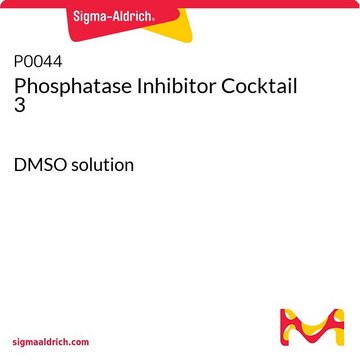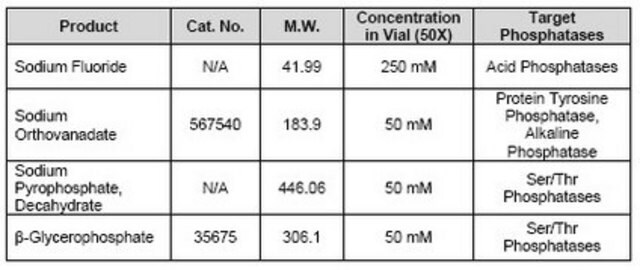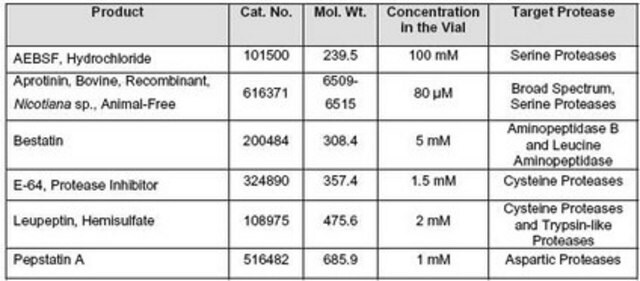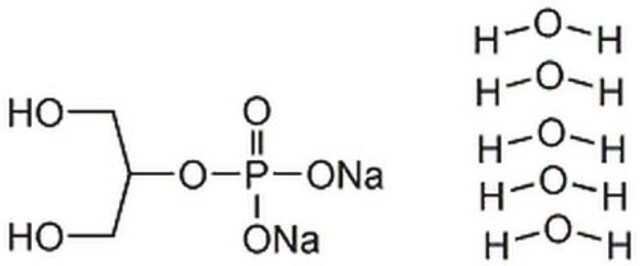524627
Phosphatase Inhibitor Cocktail III
liquid, for the inhibition of serine/threonine and protein tyrosine phosphatases
Synonyme(s) :
Phosphatase Inhibitor Mix (Set III), Phosphatase inhibitor
About This Item
Produits recommandés
Nom du produit
Phosphatase Inhibitor Cocktail Set III, Phosphatase Inhibitor Cocktail Set III is a ready to use cocktail of four phosphatase inhibitors for broad-spectrum inhibition of both serine/threonine and protein tyrosine phosphatases.
Forme
liquid
Fabricant/nom de marque
Calbiochem®
Conditions de stockage
OK to freeze
Conditions d'expédition
wet ice
Température de stockage
−20°C
Description générale
Application
- as a supplement in lysis buffer to prepare protein lysates of whole testes for western blotting
- to fortify ice-cold lysis radio-immunoprecipitation assay (RIPA) buffer to homogenize larval hindguts for western blot analysis
- as a component in cell lysis buffer to extract total proteins for western blotting
Actions biochimiques/physiologiques
Serine/threonine and protein tyrosine phosphatases
Caractéristiques et avantages
- Ready-to-use formulations for convenient use
- High-quality products for consistent and reproducible performance,
- Flexible options with a range of cocktails targeting different categories of phosphatases
Composants
- 50 mM Sodium Fluoride
- 10 mM ß-Glycerophosphate (Cat. No. 35675)
- 10 mM Sodium Pyrophosphate Decahydrate
- 1 mM Sodium Orthovanadate
Avertissement
Forme physique
Reconstitution
Informations légales
Code de la classe de stockage
12 - Non Combustible Liquids
Classe de danger pour l'eau (WGK)
WGK 2
Point d'éclair (°F)
Not applicable
Point d'éclair (°C)
Not applicable
Certificats d'analyse (COA)
Recherchez un Certificats d'analyse (COA) en saisissant le numéro de lot du produit. Les numéros de lot figurent sur l'étiquette du produit après les mots "Lot" ou "Batch".
Déjà en possession de ce produit ?
Retrouvez la documentation relative aux produits que vous avez récemment achetés dans la Bibliothèque de documents.
Les clients ont également consulté
Notre équipe de scientifiques dispose d'une expérience dans tous les secteurs de la recherche, notamment en sciences de la vie, science des matériaux, synthèse chimique, chromatographie, analyse et dans de nombreux autres domaines..
Contacter notre Service technique












